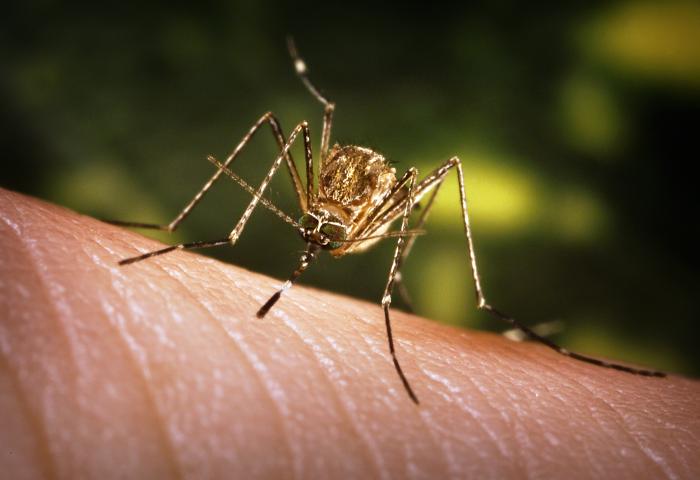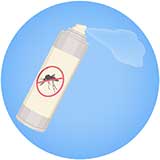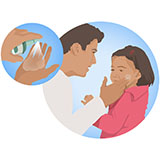Japanese Encephalitis
What is Japanese encephalitis?

Japanese encephalitis virus is spread to people through the bite of an infected mosquito.
Most people who get infected experience mild or no symptoms. In people who develop severe disease, early symptoms include fever, headache, and vomiting. These symptoms may be followed by disorientation, coma, and seizures. Seizures are more common in children.
Who is at risk?
Travelers to some parts of Asia and the Western Pacific can get infected if bitten by an infected mosquito. However, for most travelers the chance of getting infected with Japanese encephalitis virus is low.
Activities that can increase a traveler’s chance of getting Japanese encephalitis include:
- Spending a lot of time outdoors in rural areas
- Traveling during times of the year when mosquitoes are more common, such as during the summer
- Traveling for long periods of time in a place that has Japanese encephalitis
In places with four seasons, your chances of getting Japanese encephalitis are greatest in the summer and fall. In tropical and subtropical areas, mosquitoes spread the virus all year long.
What can travelers do to prevent Japanese encephalitis?
Travelers can protect themselves against Japanese encephalitis by taking the following steps.
Get vaccinated if recommended:
Japanese encephalitis vaccine is recommended for travelers who
- Are moving to an area with Japanese encephalitis to live
- Spend long periods of time, such as a month or more, in areas with Japanese encephalitis
- Frequently travel to areas with Japanese encephalitis
Consider vaccination for travelers
- Spending less than a month in areas with Japanese encephalitis but will be doing activities that increase risk of infection, such as visiting rural areas, hiking or camping, or staying in places without air conditioning, screens, or bed nets
- Going to areas with Japanese encephalitis who are uncertain of their activities or how long they will be there
Not recommended for travelers planning short-term travel to urban areas or travel to areas with no clear Japanese encephalitis season.
Use an EPA-registered insect repellent

- Use Environmental Protection Agency (EPA)-registered insect repellents with one of the active ingredients below. When used as directed, EPA-registered insect repellents are proven safe and effective, even for pregnant and breastfeeding women. If also using sunscreen, always apply insect repellent after sunscreen.
- DEET
- Picaridin (known as KBR 3023 and icaridin outside the US)
- IR3535
- Oil of lemon eucalyptus (OLE)
- Para-menthane-diol (PMD)
- 2-undecanone
Find the right insect repellent for you by using EPA's search tool.

- Insect Repellent Tips for Babies and Children
- Dress your child in clothing that covers arms and legs.
- Cover strollers and baby carriers with mosquito netting.
- When using insect repellent on your child:
- Always follow label instructions.
- Do not use products containing oil of lemon eucalyptus (OLE) or para-menthane-diol (PMD) on children under 3 years old.
- Do not apply insect repellent to a child’s hands, eyes, mouth, cuts, or irritated skin.
- Adults: Spray insect repellent onto your hands and then apply to a child’s face.
- If also using sunscreen, always apply insect repellent after sunscreen.
Wear long-sleeved shirts and long pants
Treat clothing and gear with permethrin

- Use 0.5% permethrin to treat clothing and gear (such as boots, pants, socks, and tents) or buy permethrin-treated clothing and gear.
- Permethrin is an insecticide that kills or repels insects like mosquitoes and sand flies.
- Permethrin-treated clothing provides protection after multiple washings.
- Read product information to find out how long the protection will last.
- If treating items yourself, follow the product instructions.
- Do not use permethrin products directly on skin.
- Watch the CDC video How to Use Permethrin.
Keep mosquitoes out of your hotel room or lodging
- Choose a hotel or lodging with air conditioning or window and door screens.
- Use a mosquito net if you are unable to stay in a place with air conditioning or window and door screens or if you are sleeping outside.
Sleep under a mosquito net

- Sleep under a mosquito net if you are outside or when screened rooms are not available. Mosquitoes can live indoors and bite during the day and night.
- Buy a mosquito net at your local outdoor store or online before traveling overseas.
- Choose a mosquito net that is compact, white, rectangular, with 156 holes per square inch, and long enough to tuck under the mattress.
- Permethrin-treated mosquito nets provide more protection than untreated nets.
- Permethrin is an insecticide that kills mosquitoes and other insects.
- To determine if you can wash a treated mosquito net, follow the label instructions.
If you are bitten by mosquitoes, avoid scratching the bites and apply over-the-counter anti-itch or antihistamine cream to relieve itching. See Mosquito Bite Symptoms and Treatment.
After Travel

If you traveled and feel sick, particularly if you have a fever, talk to a healthcare provider and tell them about your travel.
If you need medical care abroad, see Getting Health Care During Travel.
More Information
- CDC's Japanese encephalitis page
- Avoid Bug Bites
- JE Vaccine Information Statement (VIS)
- CDC Yellow Book: Japanese Encephalitis